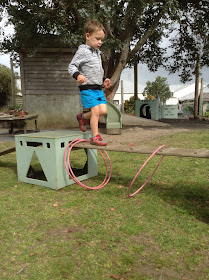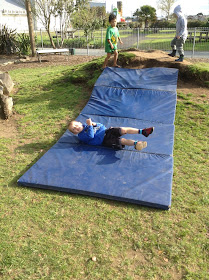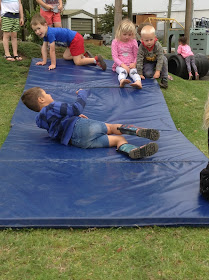Last term I wrote about the tamariki exploring balance through building block towers. To continue and further extend upon the notion of balance, the tamariki have been encouraged to explore balance with their bodies.
Balance underpins almost all that we do yet we are born with no balance at all. The vestibular system is responsible for our sense of balance. We develop and learn about balance through movement - different kinds of movement experienced in many different ways.
The obstacle course provides opportunities for the tamariki to balance their bodies through varying levels of challenge. The obstacle course offers a variety of different mediums for the tamariki to balance on: narrow planks, wide planks, tyres, and the log, some of them close to the ground, and some of them higher off the ground. The tamariki get creative with the way they move, some even getting down to use all four limbs to help them balance to stay on the obstacle course.
Other ways in which our tamariki stimulate their vestibular system and develop their balance is by hanging upside down, and rolling. Hanging upside down is a definite favourite and the tamariki try hanging off the monkey bars, the wobbly bridge, and the swings.
"Developing - and automating - a strong sense of balance, orientation, motion, and gravity is a mandatory prerequisite for children's overall development and readiness for school" (Connell & McCarthy, 2014)


The hill in the playground outside provides tamariki with the perfect slope to roll down. It's almost as much fun as hanging upside-down. And everyone has their own way of rolling...
At kindergarten at the end of the day we sometimes play a game of 'stunned mullets' with the tamariki, where the aim is to lie as still as you can for as long as you are able. We use it as a gauge, to see who has developed a strong sense of balance, but more importantly who we need to encourage to move more.
"The highest form of balance is stillness. But children can't learn to sit still by practicing sitting still... Sitting still is one of the most advanced demonstrations of vestibular maturity, and the vestibular system is developed through movement. If you want a child to learn to sit still, you've got to let him move" (Connell & McCarthy, 2014)







































No comments:
Post a Comment